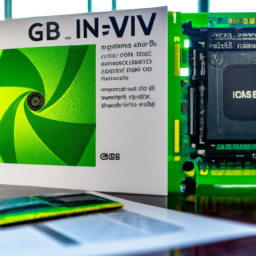Nvidia's NV-1: The Rise and Fall of Revolutionary NURBS Technology
The video accelerator market has seen a lot of changes over the years, with various innovations and technologies coming to the forefront as different companies compete for dominance. One such company is Nvidia, which has been around since the 1990s and is still a major player in the industry today. In this article, we will take a look at Nvidia’s NV-1 video accelerator and how it failed to gain traction despite its promise of revolutionary NURBS technology.

The NV-1 was released in 1995 by Nvidia and was one of the first consumer level 3D accelerators available on the market. It boasted advanced rendering capabilities utilizing NURBs (Non-Uniform Rational B-Splines), which were theorized to be able to render spheres using just six points compared to fifty triangles used by other rendering models at that time. However, due to Nvidia’s tight control over its development details and refusal to share any “secret sauce” info with developers, many programs never worked properly on NV-1. This lack of support meant that users had little incentive or reason for buying it over competitors’ products like 3DFx Voodoo cards or other options from ATI or Matrox that featured OpenGL support instead of NURBs technology.
With Microsoft pushing Direct X 7 or 8 as an alternative solution around 1999, OpenGL fell further behind due to GPU vendors struggling with fully functional drivers while DirectX provided performant drivers across multiple platforms quickly while allowing developers access a set of APIs standardized by Microsoft so they could target different architectures easily through XLNA libraries which also included networking tools as well as I/O libraries - all making it more attractive than OpenGL for game developers who were looking for easier time-to-market solutions with less effort required from them than what OpenGL offered at that time where driver checks became more complicated due to feature wars between vendors leaning heavily on extensions instead of standardization in order to one up each other while some even lied about card features they claimed their hardware supported but didn’t actually work properly causing scenes not looking right or crashing altogether leading developers away from taking part in any related projects with no surprise nor wonderment coming out from this fact given all these issues surrounding Open GL back then when compared against Direct X backed up by Microsoft money enforced monopoly powers resulting in what most would consider an unfair competition environment turning out being an advantage towards MS side who eventually solved ’extensions problem’ through their rigorous certification process along with internal testing ensuring new D3D versions could support latest hardware features available at
Disclaimer: Don’t take anything on this website seriously. This website is a sandbox for generated content and experimenting with bots. Content may contain errors and untruths.
Author Eliza Ng
LastMod 2023-03-05